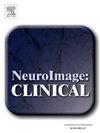多种病因谵妄的定量脑电图特征:一项多中心研究
IF 3.6
2区 医学
Q2 NEUROIMAGING
引用次数: 0
摘要
谵妄是急性脑病的一种表现,其病因不同。本研究旨在探讨谵妄的定量脑电图(qEEG)特征在基于病因的谵妄亚型之间是否存在差异,还是集中在共同的神经生理模式上。方法在这项多中心观察性研究中,我们分析了377例患者(173例谵妄,204例非谵妄)的qEEG数据。基于病因的谵妄亚型包括中风后、内科和术后谵妄,由工作医师根据精神障碍诊断与统计手册iv或5标准诊断。我们比较了不同病因的谵妄和非谵妄患者的峰值频率、相对功率和相位滞后指数(PLI),使用95%可信区间(CI)的标准化平均差异(SMDs)。结果在qEEG频谱测量中,亚组间无差异。峰值频率在所有谵妄组和非谵妄对照组之间一致下降(SMD = -0.81, CI:-1.50至- 0.13),相对δ功率增加(SMD = 1.44, CI:0.61至2.26),相对β功率下降(SMD = -1.72, CI:-2.46至- 0.97)。谵妄和非谵妄对照之间PLI的效应大小差异很小,并且在不同亚型之间不一致。结论我们的研究结果表明,不同谵妄亚型的qEEG频谱特征具有一致的模式,提示无论病因如何,谵妄的整体EEG减慢都有一个共同的神经生理途径。相比之下,PLI的差异并没有在不同亚型之间收敛。多中心研究应协调数据收集,以解开与不同病因的谵妄相关的共同和独特的神经生理变化,以促进我们对不同亚型的潜在趋同机制的理解。本文章由计算机程序翻译,如有差异,请以英文原文为准。
Quantitative electroencephalography characteristics in delirium with various etiologies: A multicenter study
Aim
Delirium is a manifestation of acute encephalopathy, which has a heterogeneous etiology. This study aimed to investigate whether quantitative electroencephalography (qEEG) characteristics of delirium differ among etiology-based delirium subtypes or converge on common neurophysiological patterns.
Methods
In this multicenter observational study, we analyzed qEEG data from 377 patients (173 delirious, 204 non-delirious) consecutively enrolled across three sites. Etiology-based delirium subtypes included post-stroke, medical and postoperative delirium diagnosed by staff physicians based on the Diagnostic and Statistical Manual of Mental Disorders-IV or 5 criteria. We compared peak frequency, relative power, and phase lag index (PLI) between delirious and non-delirious patients across different etiologies using standardized mean differences (SMDs) with 95% confidence intervals (CI).
Results
Among spectral qEEG measures, there were no differences between subgroups. The peak frequency showed a consistent decrease between all delirium groups and non-delirious controls (SMD = -0.81, CI:-1.50 to −0.13), relative delta power increased (SMD = 1.44, CI:0.61 to 2.26), and relative beta power decreased (SMD = -1.72, CI:-2.46 to −0.97). Effect sizes differences in PLI between delirious and non-delirious controls were small and not consistent across subtypes.
Conclusions
Our findings demonstrate consistent patterns in spectral qEEG characteristics across delirium subtypes, suggesting a common neurophysiological pathway of global EEG slowing in delirium regardless of etiology. By contrast, differences in PLI did not converge across subtypes. Multicenter studies should harmonize data collection to disentangle the shared and distinct neurophysiological changes associated with delirium of varying etiologies, in order to advance our understanding of potentially convergent mechanisms across subtypes.
求助全文
通过发布文献求助,成功后即可免费获取论文全文。
去求助
来源期刊

Neuroimage-Clinical
NEUROIMAGING-
CiteScore
7.50
自引率
4.80%
发文量
368
审稿时长
52 days
期刊介绍:
NeuroImage: Clinical, a journal of diseases, disorders and syndromes involving the Nervous System, provides a vehicle for communicating important advances in the study of abnormal structure-function relationships of the human nervous system based on imaging.
The focus of NeuroImage: Clinical is on defining changes to the brain associated with primary neurologic and psychiatric diseases and disorders of the nervous system as well as behavioral syndromes and developmental conditions. The main criterion for judging papers is the extent of scientific advancement in the understanding of the pathophysiologic mechanisms of diseases and disorders, in identification of functional models that link clinical signs and symptoms with brain function and in the creation of image based tools applicable to a broad range of clinical needs including diagnosis, monitoring and tracking of illness, predicting therapeutic response and development of new treatments. Papers dealing with structure and function in animal models will also be considered if they reveal mechanisms that can be readily translated to human conditions.
 求助内容:
求助内容: 应助结果提醒方式:
应助结果提醒方式:


